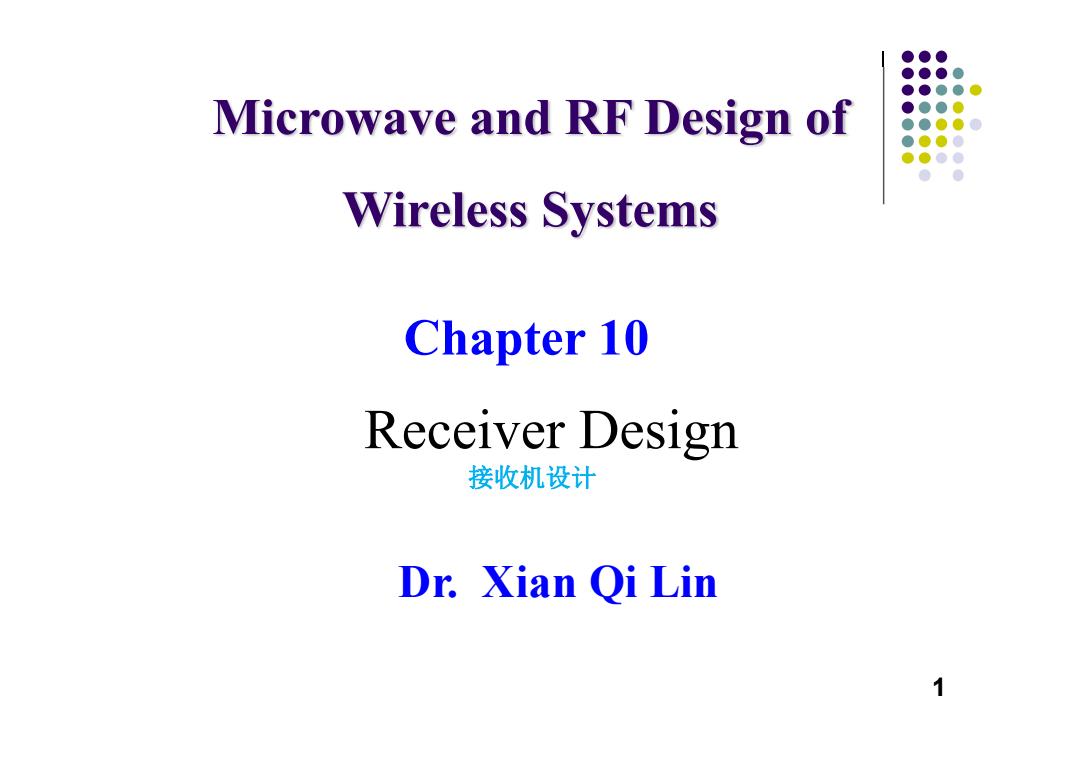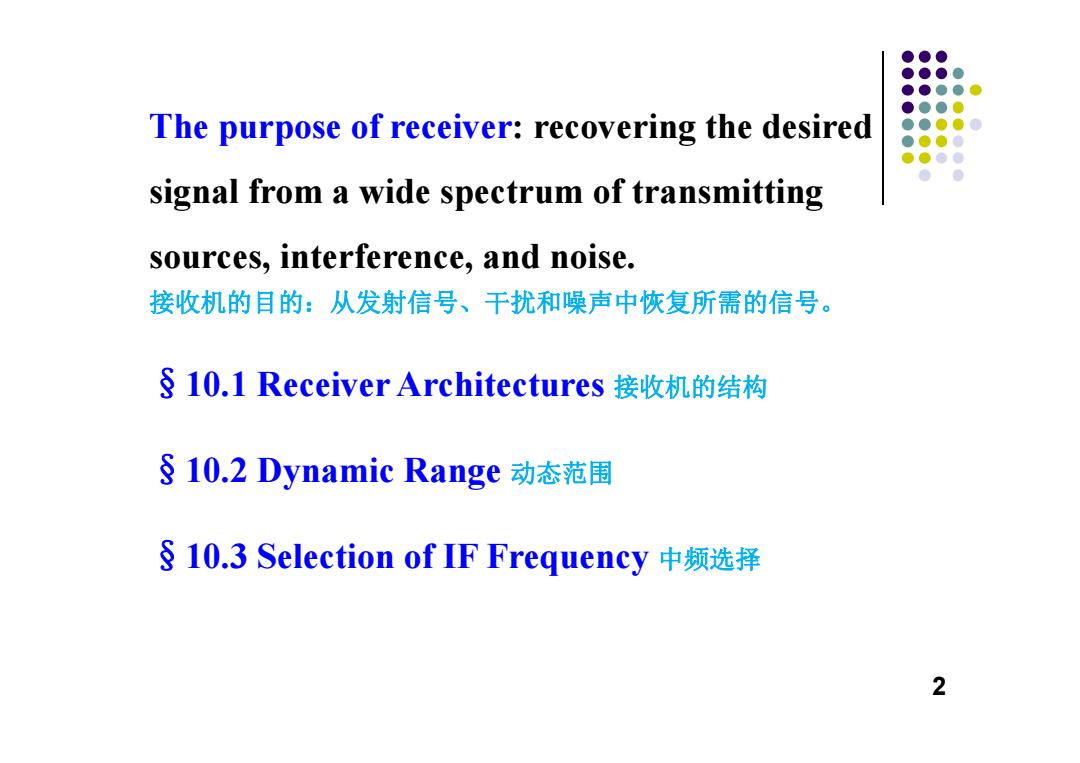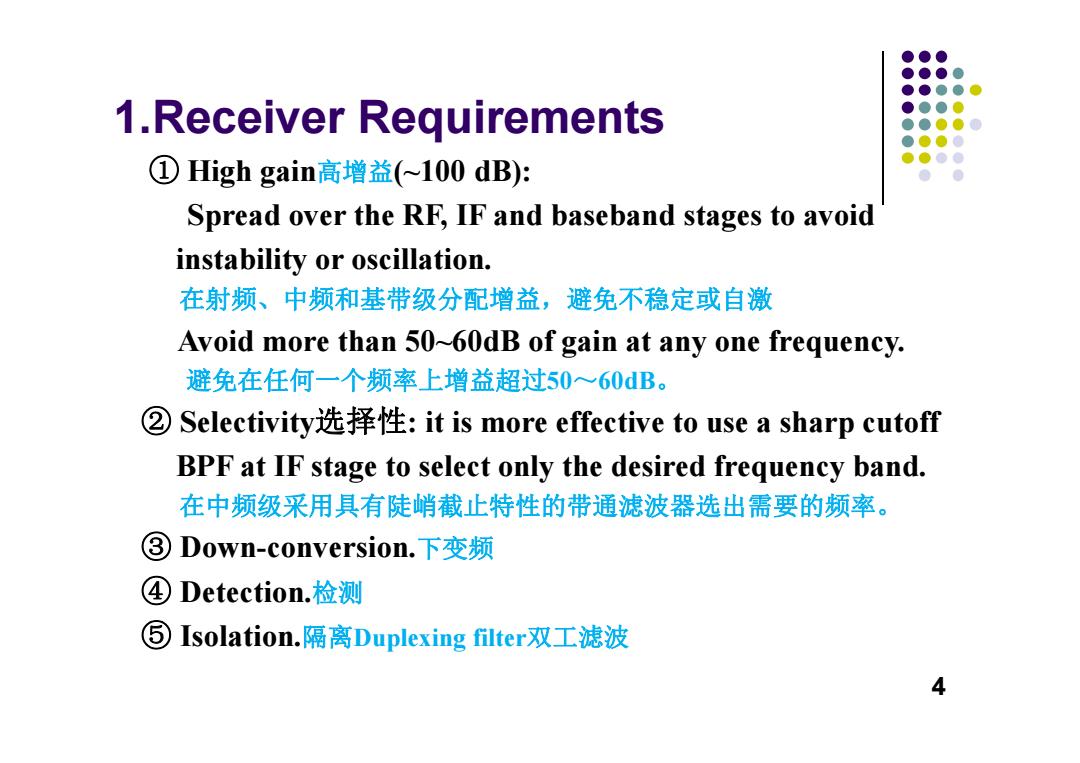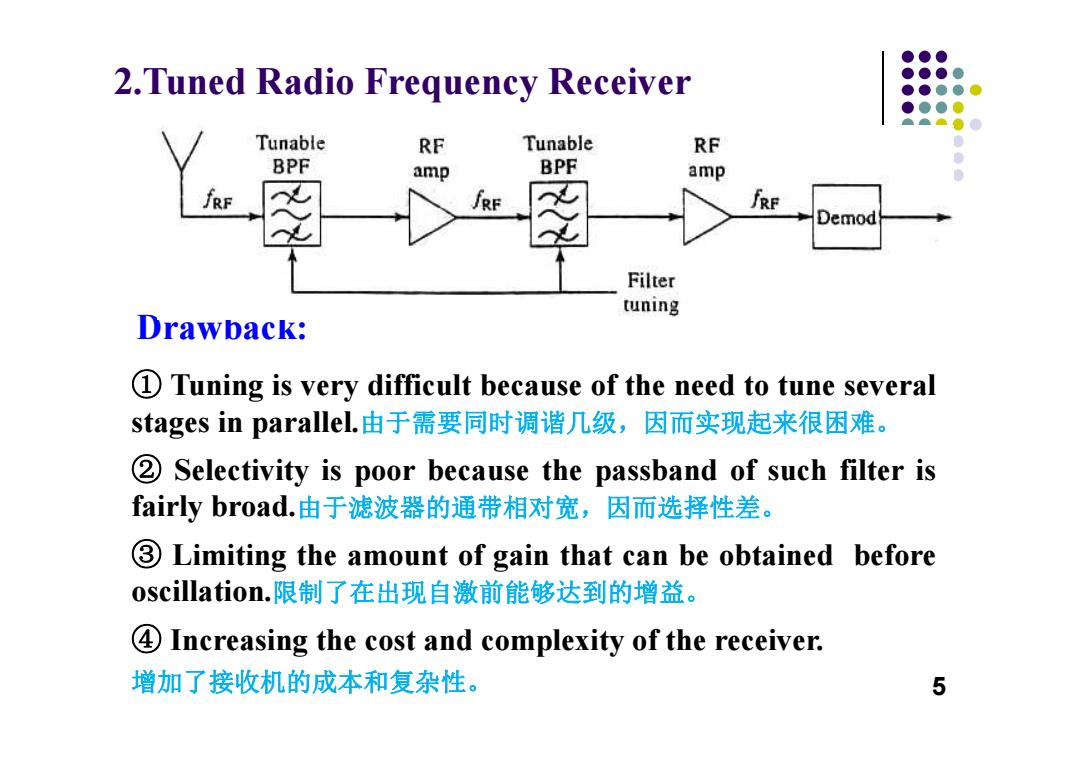
●●● ●●●● ●●●● Microwave and RF Design of ●●●● ●●●●0 ●●●0 ●●●● ● ● Wireless Systems Chapter 10 Receiver Design 接收机设计 Dr.Xian Qi Lin 1
Microwave and RF Design of Wireless Systems Chapter 10 Receiver Design 接收机设计 Dr. Xian Qi Lin 1

●●● ●●●● ●●● ●●● The purpose of receiver:recovering the desired ●●● ●●0 ●●●● signal from a wide spectrum of transmitting sources,interference,and noise. 接收机的目的:从发射信号、干扰和噪声中恢复所需的信号。 §l0.1 Receiver Architectures接收机的结构 §10.2 Dynamic Range动态范围 §10.3 Selection of IF Frequency中频选择 2
The purpose of receiver: recovering the desired signal from a wide spectrum of transmitting sources, interference, and noise. 接收机的目的:从发射信号、干扰和噪声中恢复所需的信号。 §10.1 Receiver Architectures 接收机的结构 §10.2 Dynamic Range 动态范围 §10.3 Selection of IF Frequency 中频选择 2

●●●】 ●●●● ●●●● S 10.1 Receiver Architectures ●●●● ●●●● ●●●● ●●●● ●● 1.Receiver Requirements 接收机需求 2.Tuned Radio Frequency Receiver 射频调谐接收机 3.Direct Conversion Receiver 直接变换接收机 4.Superheterodyne Receiver 超外差接收机 5.Deplexing双t 3
§10.1 Receiver Architectures 1. Receiver Requirements 接收机需求 2. Tuned Radio Frequency Receiver 射频调谐接收机 3. Direct Conversion Receiver 直接变换接收机 4. Superheterodyne Receiver 超外差接收机 5. Deplexing 双工 3

●●● ●●●● ●●●●心 1.Receiver Requirements ●●●● ●●●● ●●●● ①High gain高增益(~l00dB): ●●●● ●● Spread over the RF,IF and baseband stages to avoid instability or oscillation. 在射频、中频和基带级分配增益,避免不稳定或自激 Avoid more than 50~60dB of gain at any one frequency. 避免在任何一个频率上增益超过50~60dB。 ②Selectivity选择性:it is more effective to use a sharp cutoff BPF at IF stage to select only the desired frequency band. 在中频级采用具有陡峭截止特性的带通滤波器选出需要的频率。 ③Down-conversion.下变频 ④Detection.检测 ⑤Isolation.隔离Duplexing filter双工滤波 4
① High gain高增益(~100 dB): Spread over the RF, IF and baseband stages to avoid instability or oscillation. 在射频、中频和基带级分配增益,避免不稳定或自激 Avoid more than 50~60dB of gain at any one frequency. 避免在任何一个频率上增益超过50~60dB。 ② Selectivity选择性: it is more effective to use a sharp cutoff BPF at IF stage to select only the desired frequency band. 在中频级采用具有陡峭截止特性的带通滤波器选出需要的频率。 ③ Down-conversion.下变频 ④ Detection.检测 ⑤ Isolation.隔离Duplexing filter双工滤波 1.Receiver Requirements 4

●●● 2.Tuned Radio Frequency Receiver ●●●● ●●●● ●●●● Tunable RF Tunable RF BPF amp BPF amp ● fRF Demod Filter tuning Drawback: 1 Tuning is very difficult because of the need to tune several stages in parallel..由于需要同时调谐几级,因而实现起来很困难。 2 Selectivity is poor because the passband of such filter is fairly broad.由于滤波器的通带相对宽,因而选择性差。 3 Limiting the amount of gain that can be obtained before oscillation.限制了在出现自激前能够达到的增益。 4 Increasing the cost and complexity of the receiver. 增加了接收机的成本和复杂性。 5
① Tuning is very difficult because of the need to tune several stages in parallel.由于需要同时调谐几级,因而实现起来很困难。 ② Selectivity is poor because the passband of such filter is fairly broad.由于滤波器的通带相对宽,因而选择性差。 ③ Limiting the amount of gain that can be obtained before oscillation.限制了在出现自激前能够达到的增益。 ④ Increasing the cost and complexity of the receiver. 增加了接收机的成本和复杂性。 2.Tuned Radio Frequency Receiver Drawback: 5